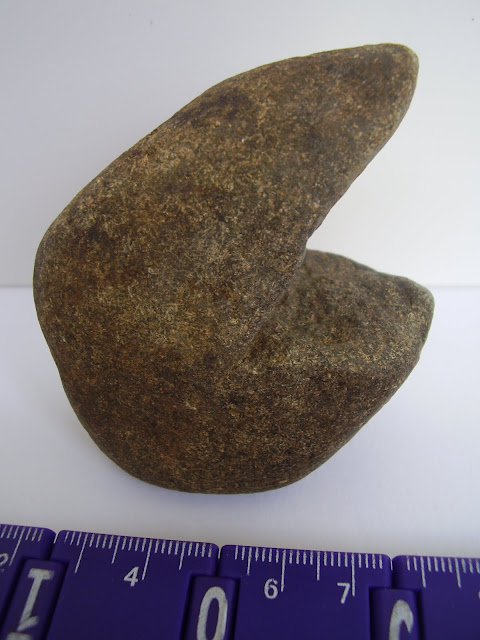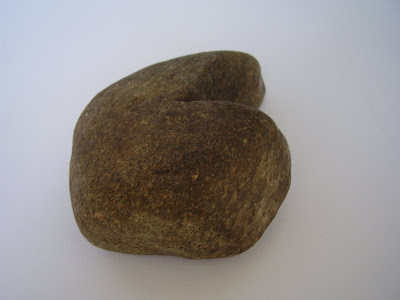Worked stone identified as a possible art sculpture representing a head and mouth by amateur archaeologist Sherry Hill. The piece was found in the Doe River valley, Carter County, Tennessee.
The back of the mouth has been excavated and the convergence of the lower jaw and the upper palate is marked by a narrow and fine, deep, incised line running from side to side across the back of the mouth of the sculpture.
This rock struck an aesthetic similarity to Kermit the Frog's head when I first saw it and as I studied it more. This got me thinking about the possibility of it representing a sock-type puppet, almost like a living, laughing, rock head. As I studied the profile of my bare hand against the rock, I noticed both the outside of the rock, the part in contact with the hand when held, and the interior mouth outline of the mouth, both mirrored the outline created by the inside of my bare hand. Here is a comparison of my hand aligned with the rock while in a position as if I would be making a simple shadow puppet.
Here is the flattened base the sculpture stands upright on
One of Sherry Hill's tool finds from the Doe River valley, Carter County, Tennessee. This knife or hand axe appears heavily rolled by the environment which can be an indicator of great age or great localized forces (like blowing dirt or sandy water) acting upon the artifact, or a combination of time and heavy weathering.
View from above demonstrating the convex/concave nature of this artifact. Jan van Es, archaeologist in The Netherlands, has identified convex/concave attributes as being significant to the artists of the Middle Paleolithic and very early Upper Paleolithic times in Eurasia.
Tennessee's Kermit alongside Oregon's similar looking artifact
The chase is on!
The First Bobblehead (see earlier posting of same name), at left, from Oregon, Kermit in middle from Tennessee, and at right another possible rock head with similar mouth representation from Oregon.














No comments:
Post a Comment